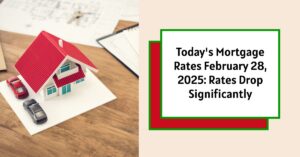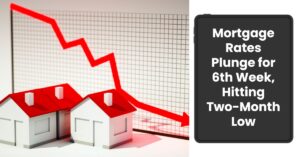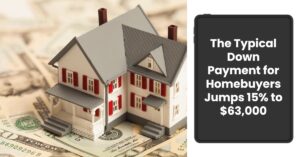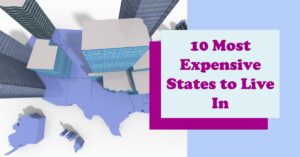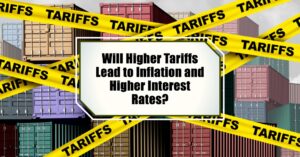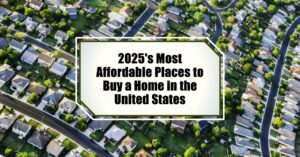Thinking of buying or selling a home in San Diego? You might want to buckle up! San Diego is indeed expected to be a competitive real estate market in 2025, landing in the top 20 hottest markets according to a recent Zillow report. This means increased competition among buyers, which could potentially drive up prices. Let's dive into why this is happening and what it means for you.
San Diego is Predicted to be One of 2025's Hottest Real Estate Markets
Why San Diego? The Perfect Storm
As someone who's been following the San Diego real estate scene for a while, I can tell you this isn't entirely surprising, but it is a significant shift. What's driving this prediction? It all boils down to a few key factors that make San Diego so desirable.
- Limited Housing Inventory: This is the big one. San Diego has been grappling with a housing shortage for years. We simply haven't built enough homes to keep up with demand. Zillow’s report highlights that the “hottest markets” are generally “starved for housing inventory.”
- Desirable Location and Lifestyle: Let's be honest, who doesn't want to live in San Diego? With its amazing weather, beautiful beaches, thriving job market, and laid-back lifestyle, it's a magnet for people from all over the country.
- Strong Job Market: San Diego boasts a diverse and robust economy, with strong sectors in technology, biotech, defense, and tourism. A growing job market naturally attracts more residents.
- Delayed Home Building: For years, home building has been slow compared to the growth in jobs. This has exacerbated the housing shortage, putting even more pressure on the market.
Zillow's Methodology: How They Predict the Heat
Their “hottest market” ranking isn't just a guess; it's based on a sophisticated index that takes several factors into account:
- Forecasted Home Value Appreciation: This looks at how much Zillow expects home values to increase over the coming year.
- Rate of Increase Over the Previous Year: How quickly are home values rising compared to the year before? A faster rate of increase indicates a hotter market.
- Days on Market: How long do homes typically stay on the market before being sold? Shorter times suggest high demand.
- Projected Change in Owner-Occupied Housing: This indicates whether more people are buying homes to live in, rather than as investments.
- Jobs vs. Building Permits: This is a crucial factor. The index looks at the difference between the number of jobs added over the last two years and the number of building permits issued for new homes during the same period. A significant gap indicates a potential housing shortage.
San Diego's Rise in the Ranks: A Closer Look
San Diego jumped ten spots, landing at number 19 on Zillow's list of hottest markets for 2025. That's a pretty significant jump! But what does it really mean for those of us living here, or hoping to move here?
Here's what I think this means for San Diego:
- Increased Competition: Expect bidding wars, especially for desirable properties in popular neighborhoods.
- Potentially Rising Prices: While the market has cooled somewhat recently, increased demand could put upward pressure on prices again.
- Faster Sales: Homes may sell more quickly, so be prepared to act fast if you find a property you like.
The Ripple Effect: Riverside's Role
The report also mentions Riverside, predicting it to be the 22nd hottest market. Riverside often acts as a “release valve” for San Diego's affordability issues. People who are priced out of San Diego are increasingly willing to commute longer distances for more affordable homes in Riverside County.
What About Affordability?
While being a “hottest market” might sound like a good thing, it's not necessarily great news for everyone. It can exacerbate affordability issues.
Consider this:
- Decades of sluggish homebuilding have created a severe housing shortage in San Diego.
- This shortage makes it difficult for many people to find affordable housing.
- A competitive market can push prices even higher, making it even harder for first-time buyers and those on a budget.
I believe, and I have seen, that we need more innovative solutions, such as increasing density in transit-oriented areas and streamlining the permitting process for new construction, to address the affordability crisis effectively.
San Francisco's Slide: A Tale of Two Cities
It's interesting to compare San Diego's trajectory with that of San Francisco, which fell 19 positions in Zillow's rankings. According to Zillow's chief economist, home values in San Francisco are expected to continue to decline. This is due to several factors:
- High Cost of Living: San Francisco's exorbitant cost of living is driving some residents to seek more affordable alternatives.
- Tech Industry Shifts: Changes in the tech industry, including remote work options and companies relocating, are impacting San Francisco's housing market.
What This Means for Buyers and Sellers in San Diego
Okay, so you know the prediction and the factors behind it. But what should you actually do with this information? Here's my take on how this might impact buyers and sellers in San Diego:
For Buyers:
- Be Prepared: Get pre-approved for a mortgage, have your finances in order, and be ready to make a competitive offer.
- Work With an Experienced Agent: A local real estate agent can provide valuable insights into the market and help you navigate the buying process.
- Consider Different Neighborhoods: Be open to exploring different neighborhoods and communities, especially those that might be slightly further from the beach or downtown.
- Don't Overpay: While it's important to be competitive, don't get caught up in a bidding war and overpay for a property. Set a budget and stick to it.
For Sellers:
- Consider Timing: If you're thinking of selling, now might be a good time to take advantage of increased demand.
- Price Strategically: Work with your agent to price your home competitively, based on market conditions and comparable sales.
- Make Necessary Repairs and Improvements: To attract buyers, make sure your home is in good condition and consider making some minor updates or improvements.
- Stage Your Home: Staging your home can help potential buyers visualize themselves living there and increase its appeal.
My Final Thoughts: San Diego's Enduring Appeal
While the prediction is certainly noteworthy, it's important to remember that real estate is a complex and dynamic market. Many factors can influence home prices and demand, including interest rates, economic conditions, and local policies.
In my experience, making investment decisions based on one report may not be ideal. Here are some points that will give you a more nuanced view:
- Interest Rates: Interest rates play a significant role in housing affordability. If rates rise, it could dampen demand and cool the market.
- Economic Conditions: A strong economy can boost demand for housing, while an economic downturn can have the opposite effect.
- Local Policies: Local policies regarding zoning, land use, and housing development can also impact the supply of housing and affordability.
Even with the potential for increased competition and rising prices, I remain optimistic about San Diego's real estate market in the long term. Its desirable location, strong economy, and high quality of life will continue to attract people from all over the world.
However, it's crucial that we address the housing shortage and work towards creating more affordable housing options for everyone. This will require a collaborative effort from policymakers, developers, and community members.
Zillow's prediction underscores the importance of affordability and inventory in the housing market. Regions with limited housing supply and relatively affordable prices are likely to see increased demand and competition. San Diego fits this description, which is why it's expected to be one of the hottest real estate markets in 2025.
Work with Norada, Your Trusted Source for Investment
in the Top Housing Markets of the U.S.
Discover high-quality, ready-to-rent properties designed to deliver consistent returns.
Contact us today to expand your real estate portfolio with confidence.
Contact our investment counselors (No Obligation):
(800) 611-3060
Related Articles:
- San Diego Housing Market Graph 50 Years: Analysis and Trends
- San Diego Housing Market Forecast 2025: What to Expect
- San Diego Housing Market: Prices, Trends, Forecast
- Is San Diego’s Housing Getting Very Expensive: Experts Predict
- San Diego Housing Market Booms With 9.4% Growth: Expert Predictions
- San Diego Housing Market Predictions: Soaring and Expensive!
- San Diego Housing Market Predictions: Prices Skyrocket 11.4%; What's Next?
- Is San Diego Real Estate a Good Investment?

